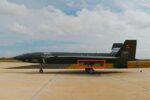The U.S. Army and Northrop Grumman have completed a significant test of the Integrated Battle Command System (IBCS), a next-generation command-and-control (C2) architecture designed to unify disparate air and missile defense assets into a single networked system. The test marks a critical milestone in the Army’s modernization efforts to counter increasingly complex aerial threats across multiple domains.
What Is IBCS? A Sensor-Fused C2 Backbone for Air Defense
The Integrated Battle Command System is a software-defined C2 architecture developed by Northrop Grumman under the U.S. Army’s Integrated Air and Missile Defense (IAMD) program. Unlike legacy stovepiped systems that tie specific sensors to specific shooters—such as Patriot radars only cueing Patriot interceptors—IBCS decouples sensors from effectors via an open-architecture network.
This enables real-time sensor fusion from multiple platforms—ground-based radars like AN/MPQ-64 Sentinel or LTAMDS, airborne sensors such as JSTARS or future space-based assets—and allows any connected interceptor (e.g., PAC-3 MSE, THAAD) to be cued based on composite tracking data.
- Enables “any sensor–best shooter” pairing
- Improves kill chain speed and resilience
- Supports joint/multinational interoperability via Link-16/STANAGs
- Designed with modular open systems architecture (MOSA)
Latest Test Validates Multi-Domain Integration Capabilities
The recent test—conducted at White Sands Missile Range in New Mexico—evaluated IBCS’s ability to integrate live data from multiple sensors and engage targets using different interceptor systems under realistic threat conditions. According to Northrop Grumman’s October 2025 release and corroborated by U.S. Army statements, the test involved:
- Simultaneous tracking of cruise missile surrogates using Sentinel radars
- Integration of Patriot Advanced Capability-3 Missiles (PAC-3 MSE)
- Engagement coordination across multiple battalion-level fire units via IBCS C2 nodes
- Live-fire intercepts demonstrating cross-battery engagement capability
The test validated IBCS’s ability to maintain track custody on fast-moving threats even when primary sensors were degraded or denied—a key requirement for operating in contested electromagnetic environments.
Operational Implications: From SHORAD to Strategic Missile Defense
The modularity of IBCS allows it to scale across echelons—from short-range air defense (SHORAD) units like Stryker-mounted M-SHORAD systems up to strategic assets such as THAAD batteries. Its ability to integrate diverse sensors—including future space-based infrared (SBIRS) or hypersonic tracking layers—makes it central to Joint All-Domain Command and Control (JADC2) initiatives.
Key operational benefits include:
- Reduced sensor-to-shooter latency: Near-instantaneous cueing improves interception probability against maneuvering threats like cruise missiles or UAV swarms.
- Shooter deconfliction: Centralized fire control prevents fratricide or redundant engagements.
- Civilian infrastructure protection: Enables layered defense around high-value urban areas or critical infrastructure nodes.
- NATO interoperability: Supports integration with allied systems under STANAG protocols; Poland has already selected IBCS for its Wisła program.
A Long Road: Development Timeline and Procurement Status
The IBCS program has been in development since the early 2010s under the oversight of the U.S. Army Program Executive Office Missiles & Space (PEO M&S). After years of delays due to software integration challenges and shifting requirements, the system passed its Limited User Test in August–September 2020. In December 2021, it received Milestone C approval for low-rate initial production (LRIP).
As of FY2024–25:
- Total planned procurement: Over $7 billion through full-rate production phase
- Main contractor: Northrop Grumman; subcontractors include Raytheon Technologies for radar integration
- NATO adoption: Poland became first international customer under Wisła Phase II; Romania also evaluating options
- Sustainment strategy: Modular software updates via DevSecOps pipeline; supports rapid patching against cyber threats
The Path Ahead: Toward JADC2 and Hypersonic Threats
The strategic relevance of IBCS extends beyond traditional air defense roles into emerging domains such as counter-hypersonic operations and space-based early warning networks. As part of its roadmap toward full JADC2 integration across services—including USAF ABMS nodes and Navy CEC—the system is being adapted for cross-domain data sharing at machine speed.
Ahead lies further testing with non-Army assets including F-35 ISR feeds and Navy Aegis BMD elements. Additionally, future increments may incorporate AI-assisted battle management tools that prioritize tracks based on threat classification algorithms—a key enabler against saturation attacks involving drones or mixed salvos.










